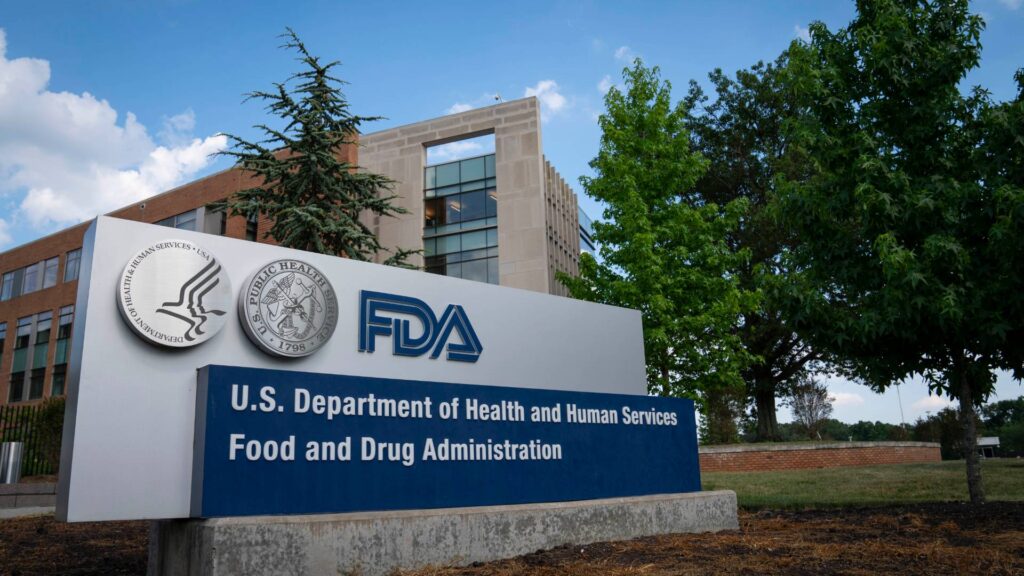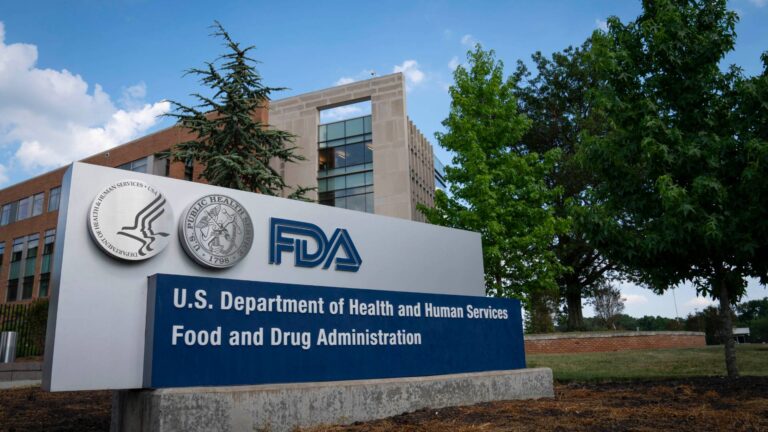Download PDF version of this article
On September 9th, 2025, the Administration sent several communications that reflect a three-pronged strategy echoing the messaging of HHS Secretary Robert F. Kennedy who has been publicly amplifying over the past few months a proposed attempt to limit and provide greater scrutiny on direct-to-consumer (DTC) prescription drug advertising.
The White House issued a presidential memorandum that seeks to “ensure that the current regulatory framework for drug advertising results in fair, balanced, and complete information for American consumers.” Subsequently, HHS issued a press release, HHS, FDA to Require Full Safety Disclosures in Drug Ads, followed by a FDA release, FDA Launches Crackdown on Deceptive Drug Advertising, along a Fact Sheet and a general letter sent to pharmaceutical companies.
This article summarizes the Administration’s recent communications on Rx advertising and offers recommendations for what healthcare marketing agencies, publishers, technology companies and their clients should consider in light of these announcements.
Since running for president in 2024, then-candidate, now HHS Secretary Kennedy has threatened to ban pharmaceutical advertising through a presidential executive order. In response to this direct assault on healthcare marketing, the 4As Coalition for Healthcare Communication (CHC) convened stakeholder groups across several industries late last year developed a sweeping advocacy and communications strategy, including a legal response, that to date this year that has resulted in over 40 national and trade media interviews, 10 conference presentations and over 50 briefings – emphasizing past Supreme Court’s precedents that advertising is commercial speech protected by the First Amendment. This right has been acknowledged by Secretary Kennedy in his May Senate testimony and in the first Make American Healthy Again (MAHA) report. Any executive order or regulatory action attempting to override those protections would immediately face a First Amendment legal challenge from several industries.
Presidential Memorandum
President Trump’s presidential memorandum is essentially is a public directive to Secretary Kennedy. Perhaps tellingly, President Trump did not issue an executive order which he has utilized hundreds of times in his first and second terms. Executive orders must explicitly cite the president’s authority to act, such as the constitution or a specific statute. Presidential memoranda have no such requirement, and no authority was stated in this instance. Instead, the memorandum only instructed the Secretary to enforce existing provisions of the Federal Food, Drug and Cosmetics Act (FDCA) and “take appropriate action to ensure transparency and accuracy in direct-to-consumer prescription drug advertising, including by increasing the amount of information regarding any risks associated with the use of any such prescription drug required to be provided in prescription drug advertisements, to the extent permitted by applicable law.”
The core principles cited in President Trump’s presidential memorandum have been part of the law for over six decades, codified in FDCA’s Section 502(n), and various amendments last made by Congress in 2007 responding to concerns about the adequacy and clarity of prescription drug disclosures. The latest changes came in 2024 when FDA completed the implementation and began enforcement of the “clear, conspicuous, and neutral” (CCN) final rule from changes made in the Food and Drug Administration Amendments Act of 2007.
In the United States, advertising for prescription drugs is one of the most tightly regulated and closely followed processes in direct-to-consumer (DTC), point-of-care (POC) and health care provider (HCP) marketing. Under the CCN final rule, it is common practice to submit major prescription drug ad campaigns for review and receive a written advisory opinion by FDA’s Office of Prescription Drug Promotion (OPDP) within five business days. Prescription drug advertising campaigns must adhere to “help ensure that the major statement (i.e., the statement relating to side effects and contraindications) in a DTC television or radio ad is presented in a clear, conspicuous, and neutral manner.” More recently, however, some compounding pharmacies and online influencers have pushed the envelope with respect to FDA advertising laws.
FDA Release on Increased Enforcement and “Adequate Provision” Rulemaking
The FDA announced that it had sent a general letter to pharmaceutical companies directing them to remove any noncompliant advertising and bring all promotional communications into compliance. While this FDA letter addressed to “over a 1000” pharmaceutical manufacturers generally can be construed to be a warning, it does not allege any specific violations and lacks the statutory and regulatory violations notice, and required actions of an actual FDA warning letter.
The general letter also referenced to violative social media posts that “only highlight drug benefits” and “undisclosed influencer promotion[s]” citing a 2024 review article from the Journal of Pharmaceutical Health Services Research that while 100% of pharmaceutical social media posts highlight drug benefits, only 33% of pharmaceutical social media posts reference potential harms. In actuality, the 2024 review relies on a 2015 study which found that of the 740 pharmaceutical company social media posts within the scope of the review, only 1.6% (12/740) of posts included drug product benefit claims, and of those 12 posts, only 33% (4/12) also mentioned drug risks.
The release also said that FDA was issuing approximately 100 “cease-and-desist” letters. However to date, 40 FDA untitled letters have been published to companies that the agency found not to be in compliance with the CCN rule. From the untitled letters reviewed, it appears that FDA is more tightly interpreting and enforcing the CCN rules from DTC and HCP advertising campaigns with the vast majority of the September 9, 2025 letters focused on television ads and a handful of video and website violations. Since the publication of the CCN final rule in December 2023, FDA previously issued eight untitled letters with the majority related to TV ads and social media posts. The substantial dismantling of the FDA Office of Prescription Drug Promotion will be a significant challenge to the agency in any ongoing enhanced enforcement effort.
Second, the FDA announced that it would be initiating a rulemaking process to eliminate the “adequate provision” stemming from a FDA guidance first published in 1997 and finalized in 1999 that allows drug and device advertising to include only major risks and then direct consumers to another location, such as a website, 1-800 phone number, concurrent print advertisements, and a disclosure that pharmacists or physicians may provide additional product information. This phrase refers to a provision in 21 CFR 202.1(e)(1)(i)(B) that has been in place since 1969 and requires drug manufacturers to include in broadcast advertising “a brief summary of all necessary information related to side effects and contraindications, unless adequate provision is made for dissemination of the approved or permitted product labeling in connection with the broadcast presentation” (emphasis added).
If the “adequate provision” regulation is rescinded, drug companies would need to provide “a brief summary of all necessary information related to side effects and contraindications” in advertising, including broadcast, potentially social media and other digital channel advertisements. Issuance of a durable new rule has specific requirements around public notice and comment periods that will take months to complete before becoming effective. Moreover, the first Trump Administration had two rulemakings that faced successful court challenges by the pharmaceutical and advertising industries.
Thwarted on a direct Rx ad ban by executive order, the Secretary now appears to be forcing an anticipated “back door” ban, attempting to make prescription drug ads on television prohibitively difficult through the requirement of comprehensive disclosures/warnings. In addition, the FDA could attempt to circumvent formal rulemaking by rescinding or revising the guidance for a de facto Rx ad ban potentially accelerating the process to weeks – but also making it far more vulnerable to multiple legal challenges.
While regulations and guidance currently define the standard for the “adequate provision” of safety information, the concept of the major statement is codified in statute. Contrary to what is implied in its announcement and fact sheet, the FDA cannot entirely move away from allowing safety information to be summarized in advertising without congressional action to amend the FDCA’s Section 502(n). Any attempt to do so would conflict with the statutory requirement that such a major statement of safety information be included in DTC advertising.
The Administration’s announcements fail to recognize that the “pre-1997 status quo” legally permitted DTC broadcast advertisements to rely on the approach of presenting the “major statement” of risks in conjunction with “adequate provision” of drug labeling. Prior to the 1997 draft guidance, there was uncertainty among many pharmaceutical companies regarding how to satisfy the “adequate provision” approach in DTC broadcast ads, but the issuance of the 1997 draft guidance did not mark a change in the underlying legal requirements. As FDA explained in its Questions and Answers document issued in parallel with its 1999 final guidance (Q7):
FDA does not agree that it has loosened restrictions on broadcast advertisements, although we have taken steps to make them more feasible. Since being promulgated in the 1960s, the regulations have provided for alternative requirements for broadcast, as compared with print, advertisements. Although product sponsors theoretically had the option of using the adequate provision alternative instead of presenting a brief summary in connection with broadcast advertisements, the absence of formal guidance created uncertainty about how the Agency would treat any particular approach. The result was a broadcast environment confusing to consumers and less than optimal for effectively communicating product information. Given that there are no legal impediments to such consumer-directed broadcast advertising, the Agency was obliged to provide appropriate guidance.
Administration efforts to ban DTC drug and device advertising – whether direct or “back door” rule changes creating a de facto ban – will be met with serious legal challenges based on conflicts with the FDCA statute, administrative law, and constitutional grounds. Given this, three possible scenarios are likely to emerge from these coordinated Administration communications:
- The FDA begins a formal rulemaking process to remove the “adequate provision” regulatory paradigm. This will require a lengthy proposal process and public comment taking likely at least a year, and any final rule will most likely be derailed by litigation.
- The FDA moves forward with a simpler “guidance change” process, which may be more efficient, but is subject to additional legal challenges.
- The FDA limits the scope of the proposed rule and guidance change, which may reduce litigation risk. However, this limited approach also would likely have a smaller impact on the pharmaceutical and healthcare marketing industries.
In any of the above scenarios, regulatory implementation would likely take months and trigger multiple legal challenges.
And third, FDA announced in the Fact Sheet that they would “close digital loopholes by expanding oversight to encompass all social media promotional activities.” Examples of promotional activities would include: (1) influencer partnerships and sponsored content; (2) algorithm-driven targeted advertising and “dark ads”; (3) AI-generated health content and chatbot interactions; (4) platform-specific promotional strategies to evade detection; and (5) emerging digital technologies and promotional methods. In a separate FDA press release, the agency noted that it is “already implementing AI and other tech-enabled tools to proactively surveil and review drug ads.”
This focus is consistent with those highlighted in the second MAHA, Make Our Children Healthy Again Strategy Report, emphasizing that the FDA, Federal Trade Commission (FTC), and the Department of Justice (DOJ) would increase their scrutiny of DTC drug advertising, particularly with violations involving social media influencers and DTC telehealth companies.
In the past, FDA has acknowledged that it currently lacks the authority to “rein in” advertising by telehealth companies and social media influencers that are not manufacturing or distributing a drug or acting on behalf of a drug’s manufacturer, packer, or distributor. It is not clear how FDA would enforce the actions above as the agency has no regulations that specifically address social media communications, and only a limited number of draft social media guidance, or whether this is the jurisdiction of other federal agencies, such as FTC.
The CCN final rule FAQs, a CHC webinar with FDA on the final rule, and the several “untitled” letters to prescription drug social media campaigns, indicate that FDA’s CCN authority only extends to television and radio prescription drug marketing – not social media, streaming or other digital channels. While legal counsels may argue that the CCN rule only technically applies to Rx advertising on television and radio, healthcare marketing agencies and clients are urged to consider complying with the CCN rule across all digital channels to enhance consumer and caregiver comprehension, or at minimum risk future FDA untitled letters, or risk clients having to testify before Congress on deceptive advertising practices.
Recommendations for Healthcare Marketers and Your Clients
The healthcare marketing industry wholly supports efforts to curb misleading DTC Rx advertising that is the cornerstone of FDA law and regulations. The shared goal of the FDA and healthcare marketing industry is to ensure that patients and their caregivers are better informed and more effectively engage with their healthcare providers, supporting collaborative joint decision-making and improved health outcomes.
These recent communications represent the Administration’s frequent tactic of policymaking by headline with the overall intent to reduce or curtail healthcare marketing. To date, FDA standards for prescription drug marketing remain unchanged, with no direct or de facto Rx ad bans as a result of these recent Administration communications.
Many of the studies cited in these communications point to largely outdated and some inaccurate information about the benefits of healthcare communications and marketing, and are contrary to the use and value seen in practice. The Washington Post’s editorial board appears to agree when it recently published its opinion, Those annoying pharmaceutical ads have real value.
Specifically, we recommend that health marketing agencies, publishers, technology and biopharmaceutical companies, take the following actions in light of these Administration announcements:
- Do not react or capitulate to vague letters and press releases – react to law and regulation. Consult with legal counsel to assess regulatory inquiries or demands.
- Audit current and planned marketing campaigns. working closely with legal and compliance teams to continue alignment with the current FDA prescription drug and device standards, and ensuring robust review processes are in place for all DTC and HCP advertising, including social media advertising.
- Consider extending “clear, conspicuous and neutral” (CCN) compliance across all digital channels.
- Partner with trusted organizations, such as the CHC and 4As or ANA, that proactively prepare for the changing winds of the healthcare marketing industry through strong governance, advocacy and policymaking.
For questions or further information, please contact Jim Potter, Executive Director, 4As Coalition for Healthcare Communication, at [email protected].




